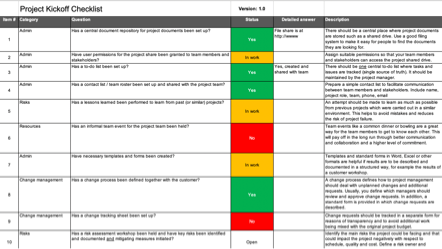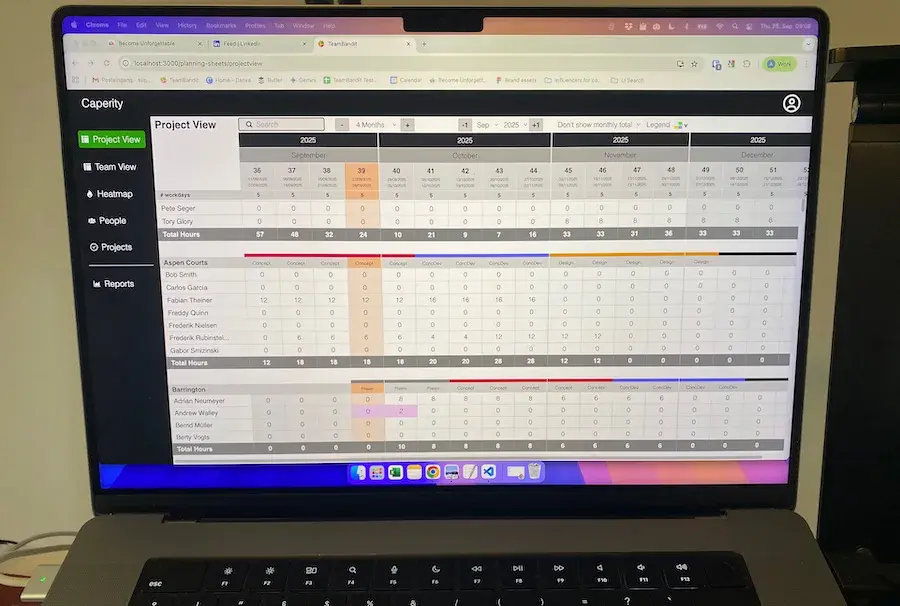If you are responsible for a large project portfolio, setting up quality gates can be a great step to improve the success rate and quality of your projects
In this article, we’ll explore what quality gates are and how they can benefit your projects.
What are quality gates?
Quality gates are predefined milestones where a project is audited to see if it meets the necessary criteria to move into the next phase.
Quality gates — which are also called “QGs” — are an important component of formal project governance procedures used by larger organizations and their PMOs.
The purpose of quality gates is to ensure every project follows a set of defined rules and best practices to avert common project risks and increase the odds of success. To be more blunt: With the help of quality gates, organizations can ensure that their project managers are doing their homework and not skipping any critical steps.
In their practical implementation, quality gates are organized as meetings that are scheduled at the end of every project phase. This is what it typically looks like:

A little analogy
As you know, I like to explain project management concepts with analogies. So here is one for you: Imagine you’re going on a diving trip in the blue waters of Tahiti. The diving instructor is checking every candidate for his equipment: Got a mask on? Checked. Fins on? Checked. Air source working? Checked. No diver is allowed to pass into the water without having undergone this safety check. That’s how quality gates work.

Quality gates can save millions of dollars
While you rarely see QG-based processes in smaller organizations, large companies use them extensively to manage their project portfolio. Think of companies like Microsoft or General Electric, who spend billions of dollars on projects. If — through better quality management — they are able to increase the success rate of their projects by even 3%, it will save them millions every year.
But hey, what’s the actual process for quality gates?
No quality gate without a checklist
Quality gates rely on checklists that project managers have to go through at different stages in the project lifecycle. These checklists include a number of questions addressing various aspects of the project, including scope, budget, stakeholders, risks and compliance.
A practical example is my project kickoff checklist, which guides project leaders through the recommended steps for launching a new project. This checklist would have to be completed for the first quality gate, which comes at the end of the project planning phase.

To give you an example of what the kickoff checklist asks for: It requires the budget to be approved. So, there is a specific question “Has a project budget been created and approved by the customer?”. And you as the project manager will answer the question with a ‘Yes’ if that’s the case.
Then you complete all the other questions and once done, you are ready to pass the initial quality gate!
What happens at a quality gate?
Ahead of a quality gate meeting, the project manager will go through the relevant QG checklist and answer each question truthfully, taking into consideration the current project status. He will also share the completed checklist with the relevant decision-makers (or gatekeepers) to give them enough time to review the information before the actual quality gate meeting.
During the quality gate meeting, the attendees will go through the checklist and discuss the most critical checklist items. The project manager will give context and answer any questions that come up. Do we have a signature from the customer? Yes we have. How are you going to involve our remote team in Vietnam? We have a weekly call. That sort of questions.
The discussion mainly revolves around the points that have not been completed — checklist items that were answered “No” or “in progress”. Maybe a project role hasn’t been filled yet or the budget hasn’t been signed off by the client yet.
Depending on the topic and the gravity of the issue, the QG team — usually comprised of management from the project sponsor and key stakeholders — will call for a different action. If the unfilled project role doesn’t have any work for now that’s not a problem and the project can continue. If however the project budget is still under discussion, that’s a clear showstopper and the project should be put on hold until costs are approved.
The gatekeeper may also demand additional measures to be taken for specific checklist items. If for example, one stakeholder raises concerns about whether the resource planning is in line with HR rules, he may request to have HR check the project’s resource plan.
Why you should implement quality gates
Now that you have a basic understanding of quality gates, let’s look at the benefits of establishing quality gates in your projects. Because the benefits are a matter of perspective, we’ll be comparing benefits both for the organization and for the project manager.
Benefits for the project manager:
- Quality gates are a great tool for structuring projects. Complex and messy projects can be broken down into smaller phases, each phase concluding with a quality gate that sets out clear expectations and deliverables.
- Quality gates are also a communication tool for the PM. With the help of checklists that have to be prepared for a quality gate, the project manager is able to communicate the current status of the project in a matter-of-fact way, leaving no room for interpretation.
- From my own experience I can tell you that quality gates also have a positive impact on the quality of the project manager’s work because they raise accountability. Why? Because you know that in the upcoming QG you’ll have to “let your pants down” and give an honest picture of your project. So, you want to make sure the picture looks nice 🙂
Benefits for the organization:
- Checklist-based quality gates are an effective way to lower the risk of projects not delivering their intended goal or going over budget.
- QG-based project management processes are also fairly easy to manage because the PMO doesn’t have to chase their project managers for updates on the project status. Instead, the PMs just have to submit their QG documentation at predefined intervals and wait for the approval.
What keeps you from using quality gates?
Of course, it requires effort to set up a quality gate process and get project managers to follow it. But the benefits (higher success rate for projects) definitely outweigh the disadvantages (extra work).
Keep in mind is that implementing formal project management procedures with quality gates requires a cultural change in the organization. People have to get used to the added bureaucracy and the increased level transparency which eventually benefits the entire organization.
If have haven’t implemented quality gates yet, what’s been stopping you? Send me a message below.
Recommended: The Ultimate Guide to Setting up a PMO
Do you have a question?
Have a question about this article? Need some assistance with this topic (or anything else)? Send it in and I’ll get back to you soon.
Author
-
Hi, I’m Adrian, a Senior Project Manager and the Creator of Tactical Project Manager, where I teach a pragmatic approach to project management. Led large-scale IT and business projects for over 10 years. My goal is to enable you to lead any project with confidence.
View all posts
